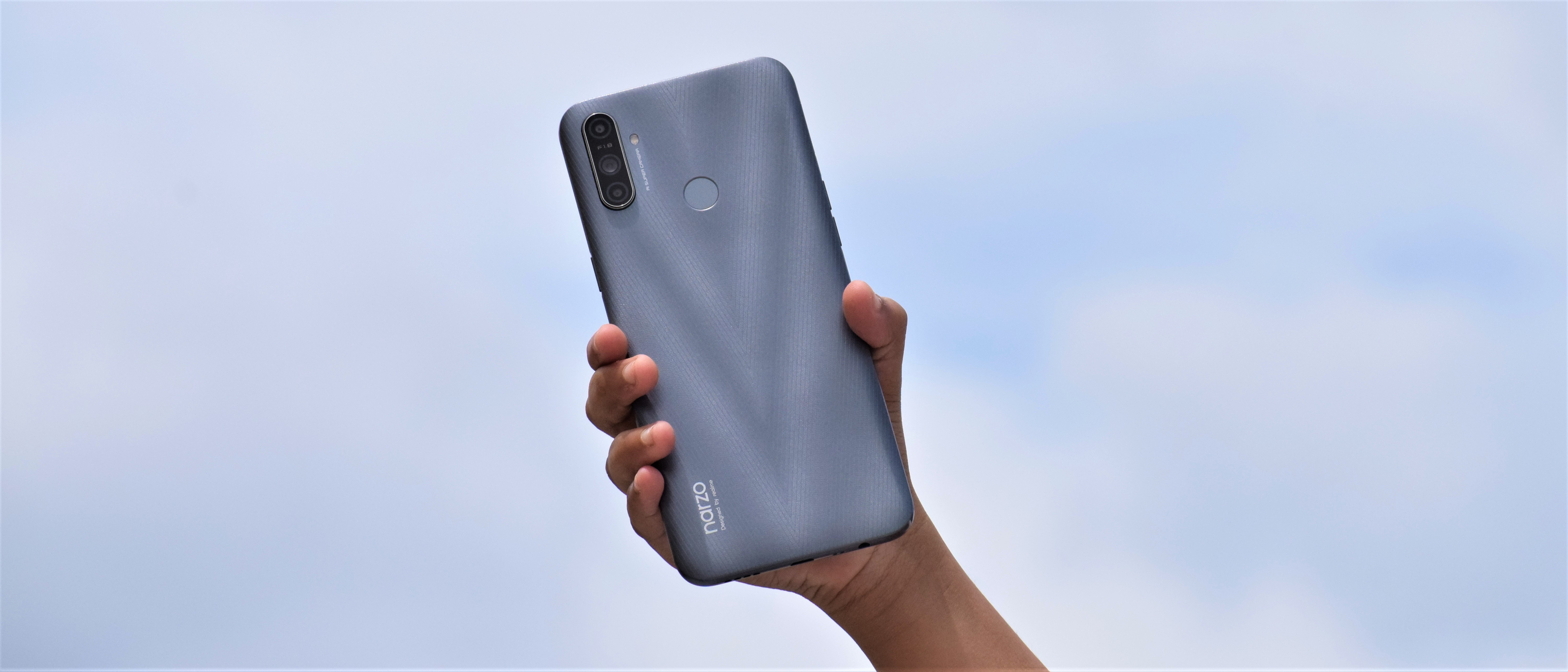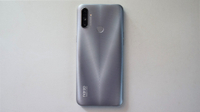TechRadar Verdict
The Realme Narzo 20A is a phone that offers excellent battery life, good design and display. However, when it comes to the performance, it fails miserably. And for a smartphone in 2020, we did not expect this to happen.
Pros
- +
Battery life
- +
Good daylight camera performance
- +
Decent display
Cons
- -
inconsistent performance
- -
Slow charging
- -
Sluggish UI
Why you can trust TechRadar
Two minute review
Realme’s growth in India as a smartphone maker can be attributed to its excellent mid-range and budget offerings. The new Realme Narzo 20A tries to take it further in the latter, but cuts rather large corners, ironically making its target audience smaller.
Amid a confusing lineup, the Narzo 20A aims to take care of the sub Rs 10,000 segment. For starters, it gets the essentials right: reliable battery life, a big display and a catchy design—features that consumers in this price band usually prefer. Even the cameras are above average for that matter.
However, the performance stood out like a sore thumb in our experience. While it does an admirable job at gaming, day-to-day operations seem like a chore for this phone. We believe this is due to unoptimized software more than anything else. It also affects each interaction with the phone’s interface, making them feel sluggish.
As it stands now, the Realme Narzo 20A is a difficult phone to recommend for most users, as the inconsistencies are easy to notice. We will keep an eye on the software.

Realme Nazro 20A price and availability
The Realme Narzo 20A made its debut on September 21 alongside the Narzo 20 and Narzo 20 Pro. This is the most affordable among the three. The Nazro 20A starts at Rs 8,499 for the 3GB + 32GB variant and the 4GB + 64GB variant will cost you Rs 9,499. You can choose from Victory Blue and Glory Silver colour options.
Design
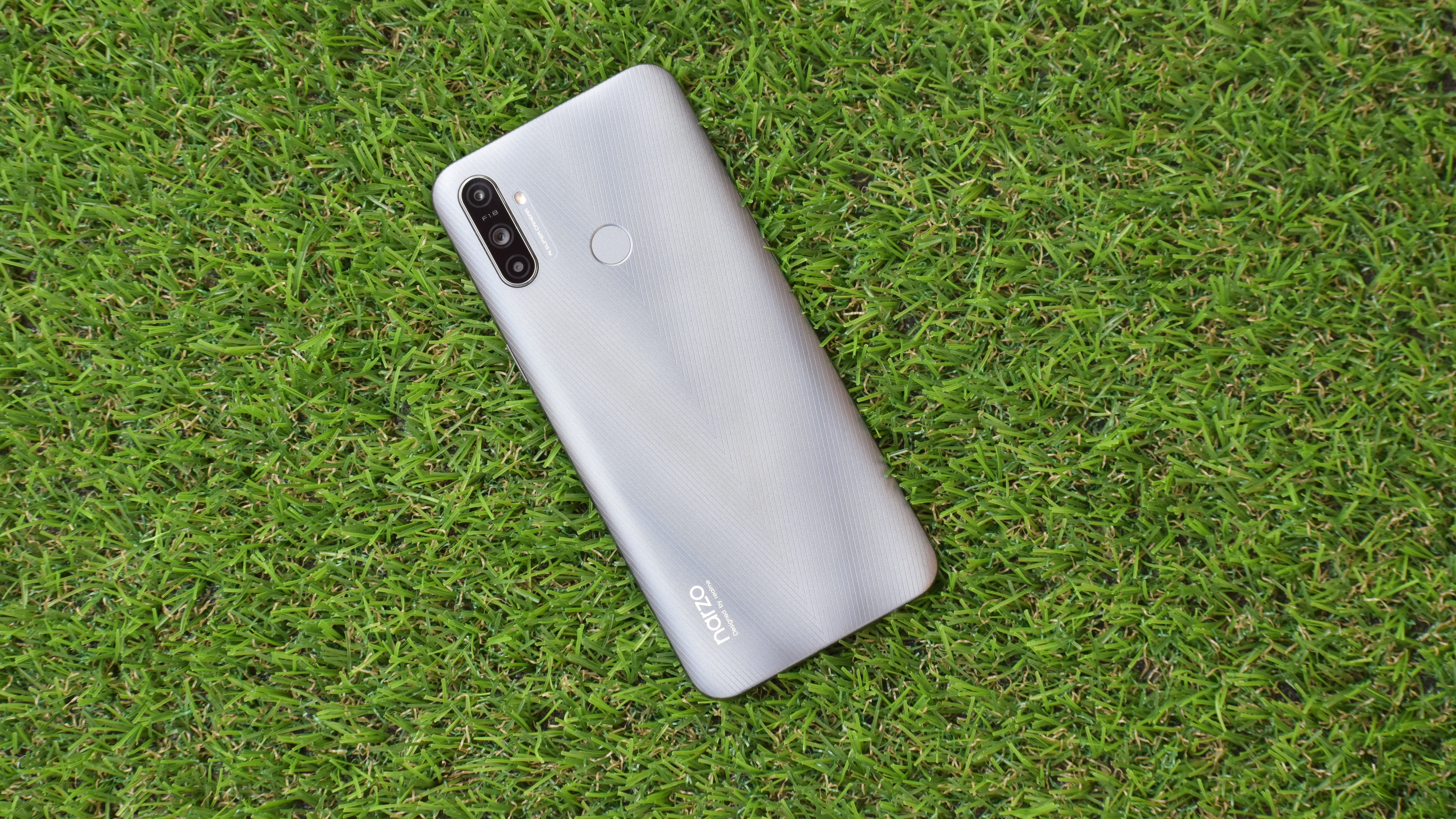
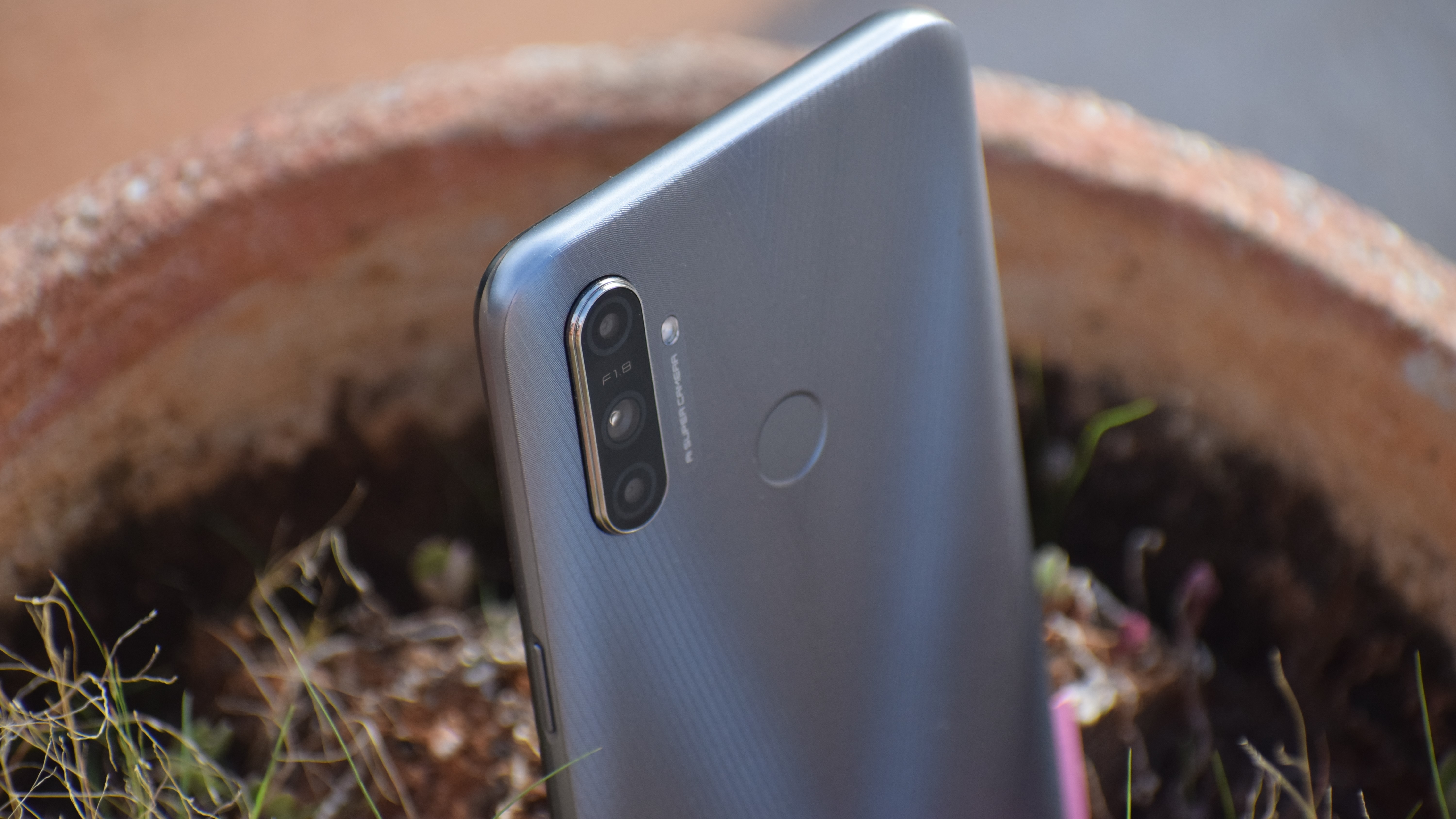
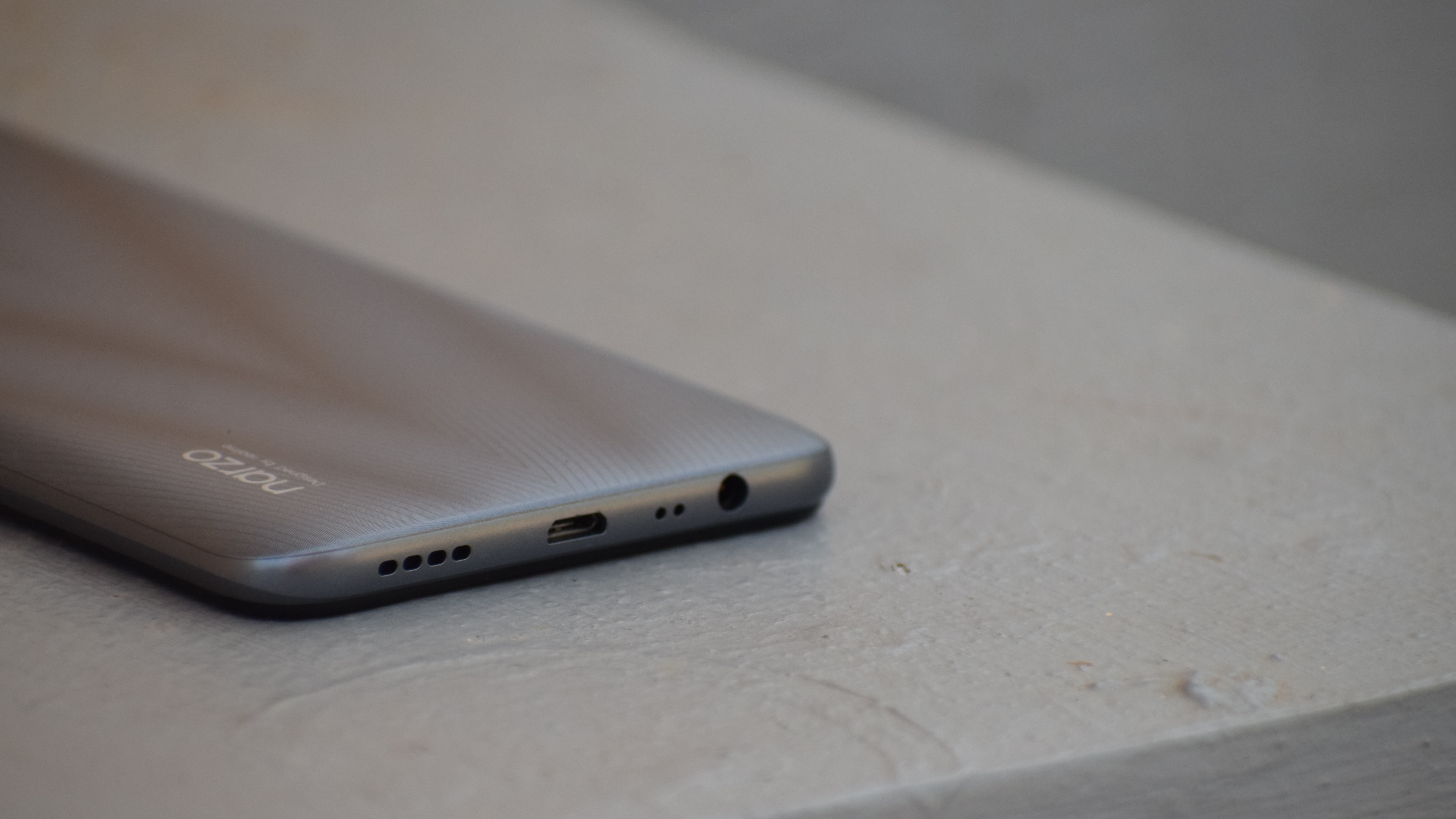
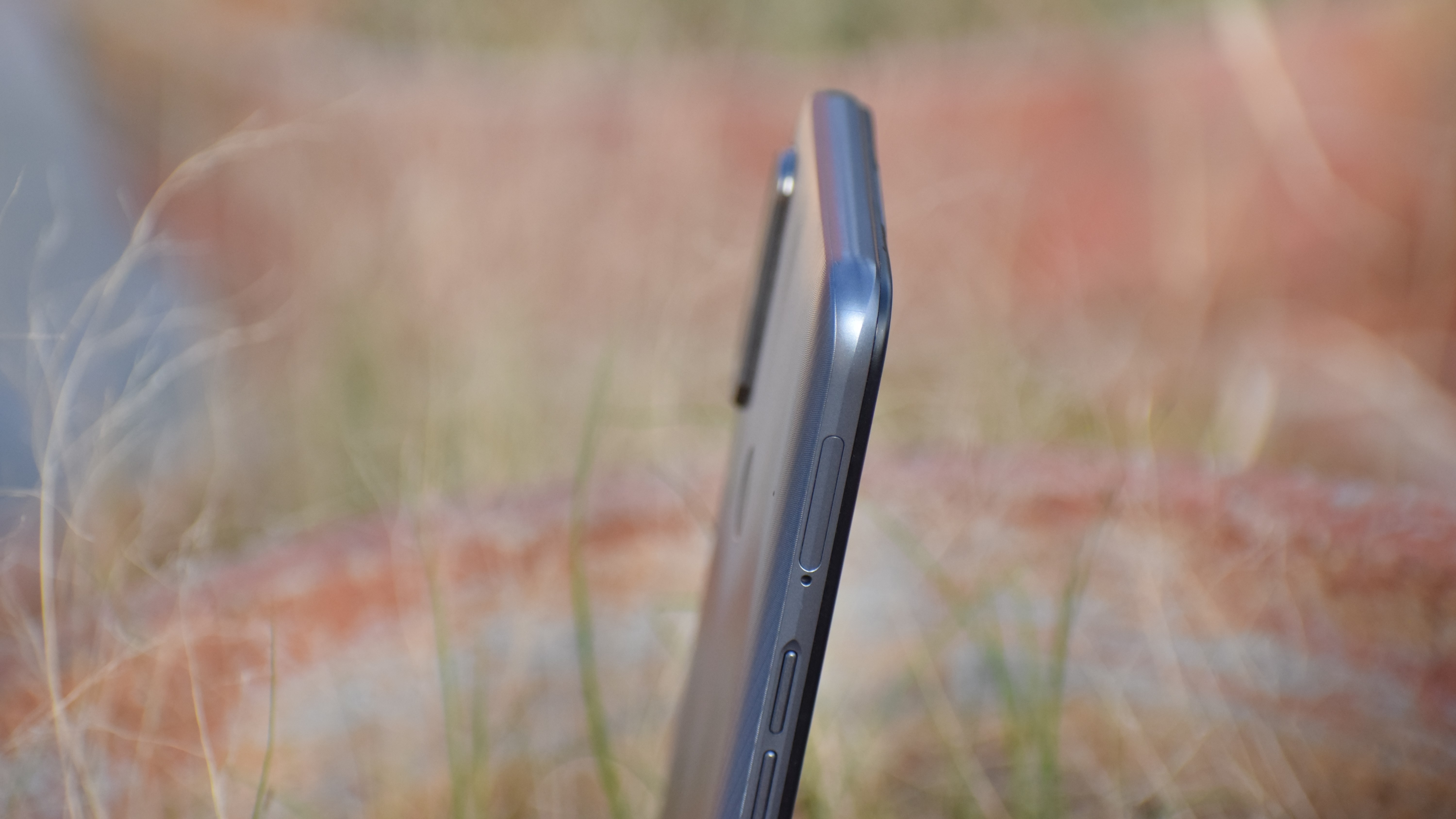
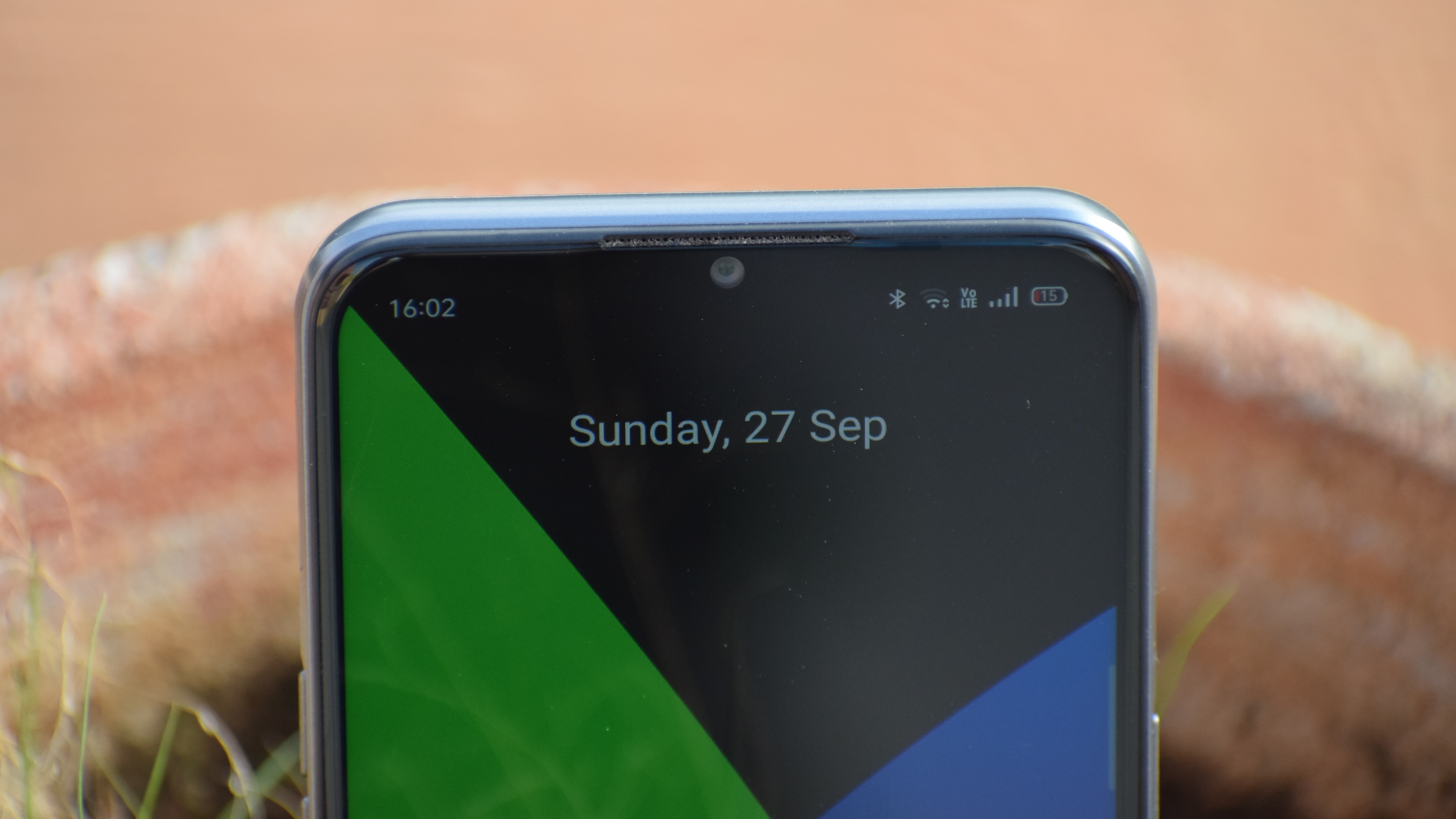
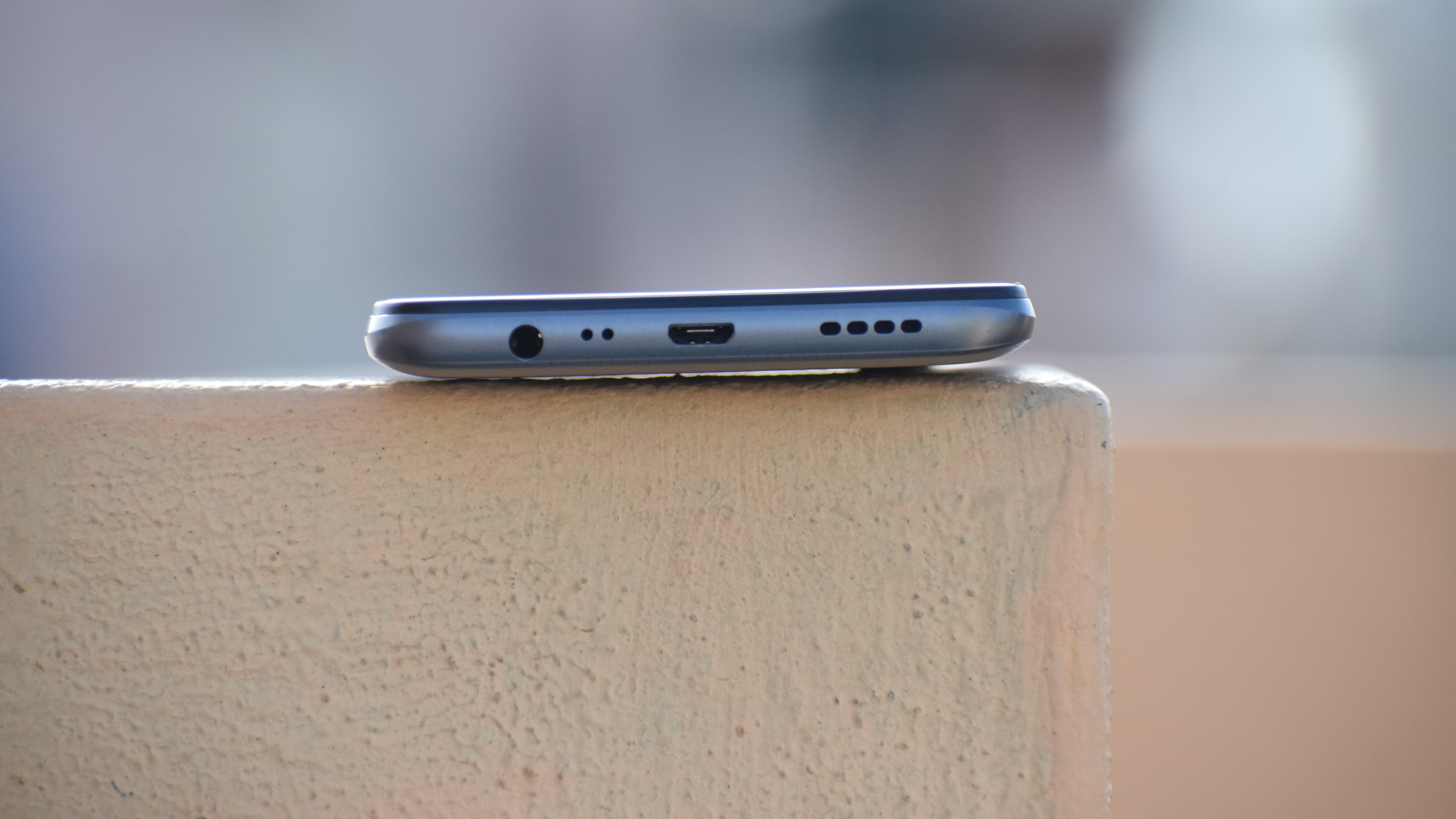
The Realme Narzo comes with an entirely new design compared to the Narzo 10A. Realme opts for a new Victory design here. You get a V-design at the back with a smooth texture which gives the device a good look. On the rear, we also get the triple camera setup aligned vertically along with a LED flash. You also get a physical fingerprint scanner on the back. The build overall is pretty good for a plastic phone. It’s a complete plastic back which offers good grip while you hold it.
The Narzo 20A weighs 195 grams and is thick at 8.9mm. The rear camera protrudes a bit from the module and is surrounded by metal trim. To the right of the device, you get the power button which is placed slightly towards the top of the device making it hard for most people to reach easily. To the right, you get volume buttons which are slightly more flushed into the body but offer good tactile feedback. The three-card slot is also present on the same side. The micro USB port, 3.5mm headphone jack, and speaker sits to the bottom of the Narzo 20A.
Overall, the design of the device is good and the new design is certainly a standout feature here. The device doesn't feel hefty with the massive battery onboard. Realme has managed to distribute the weight around the place.
Display
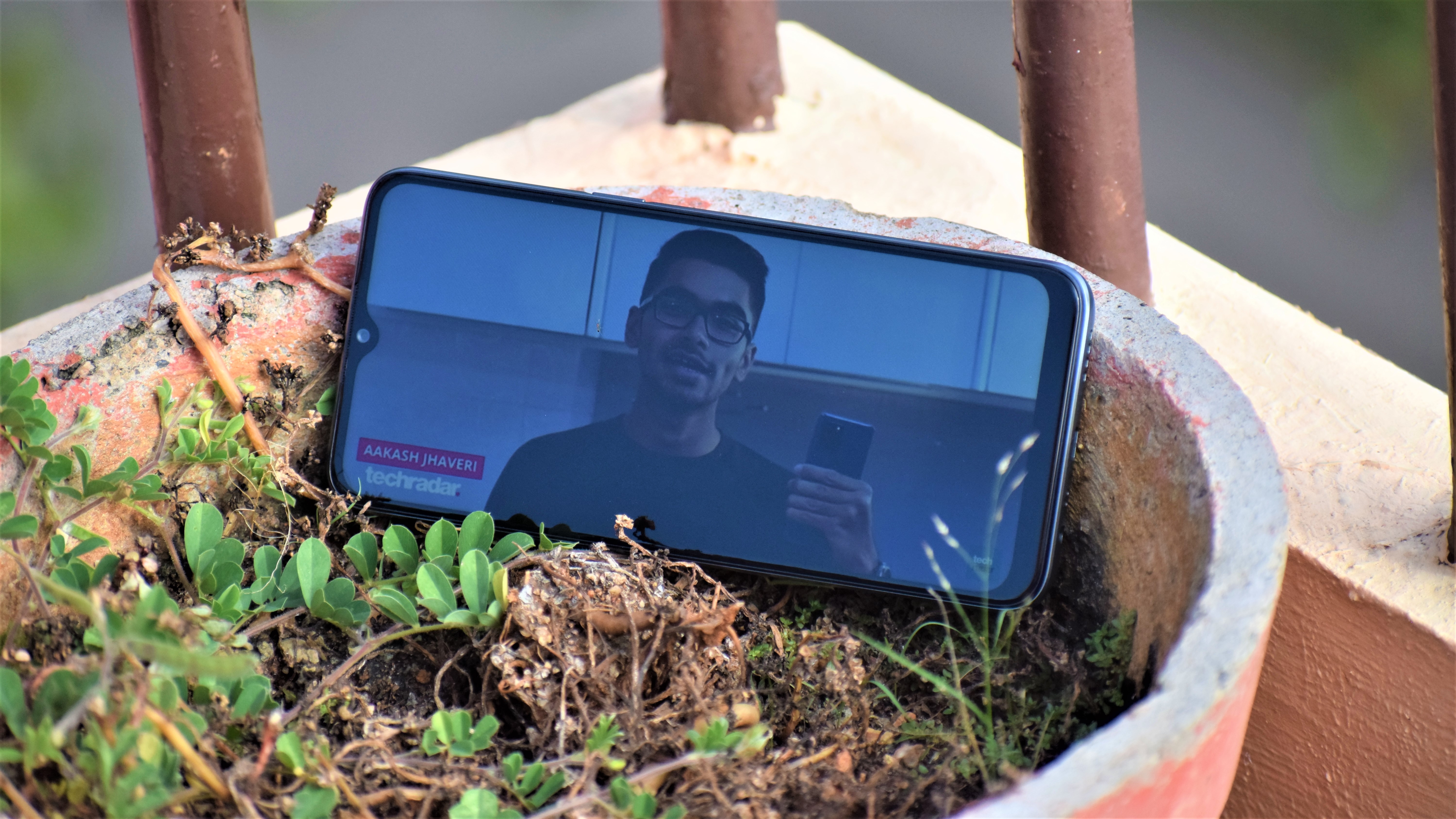
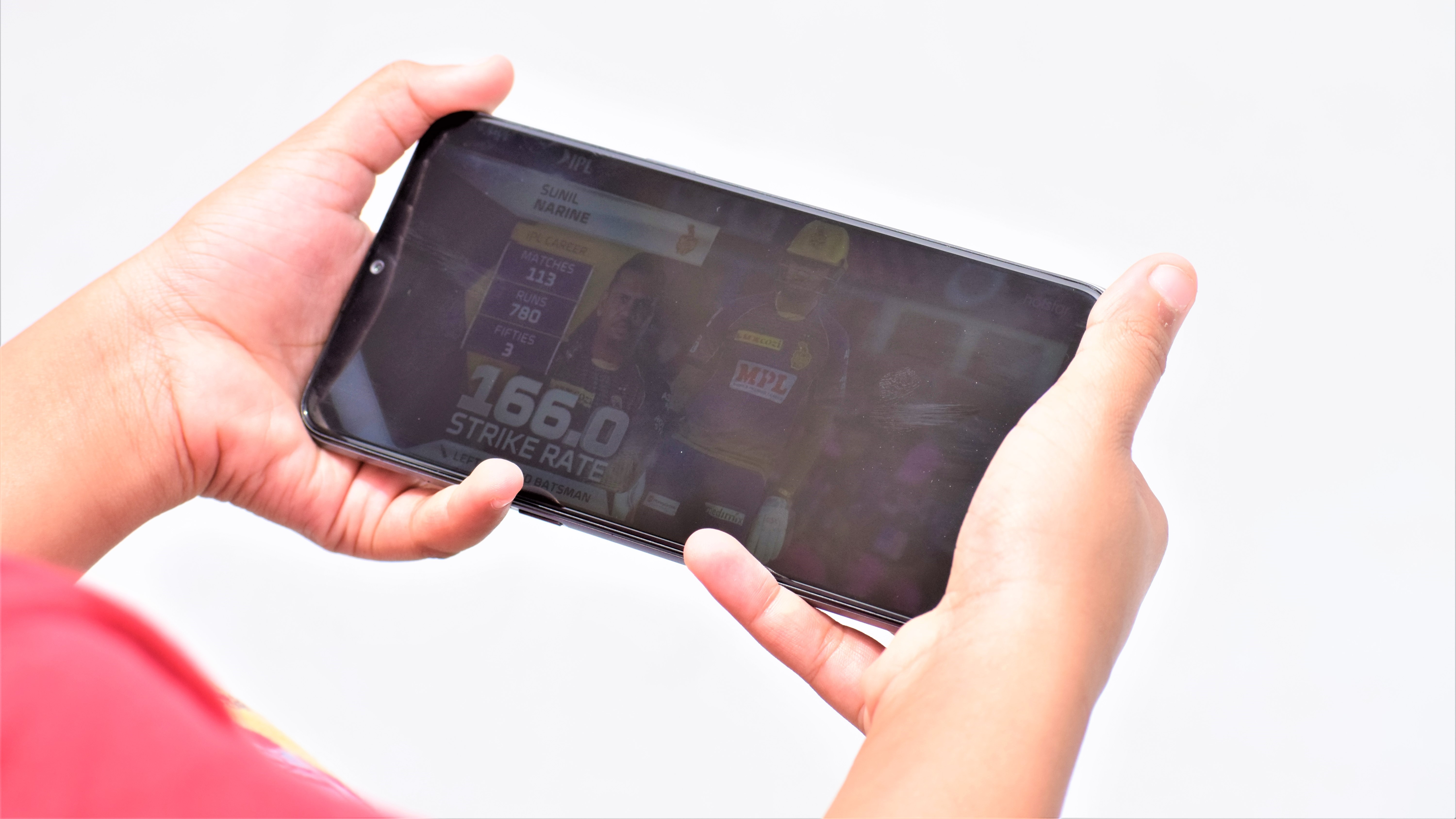
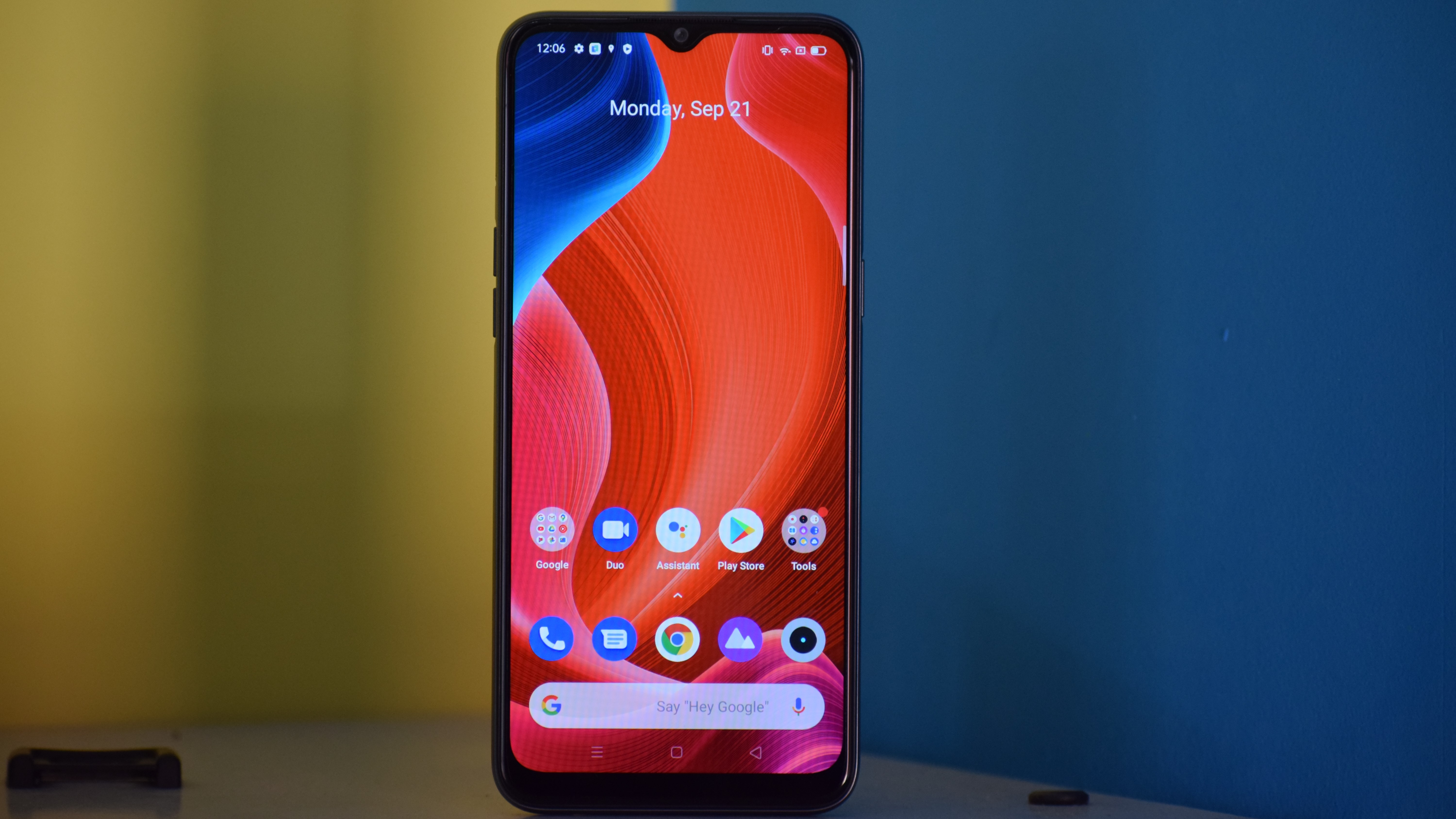
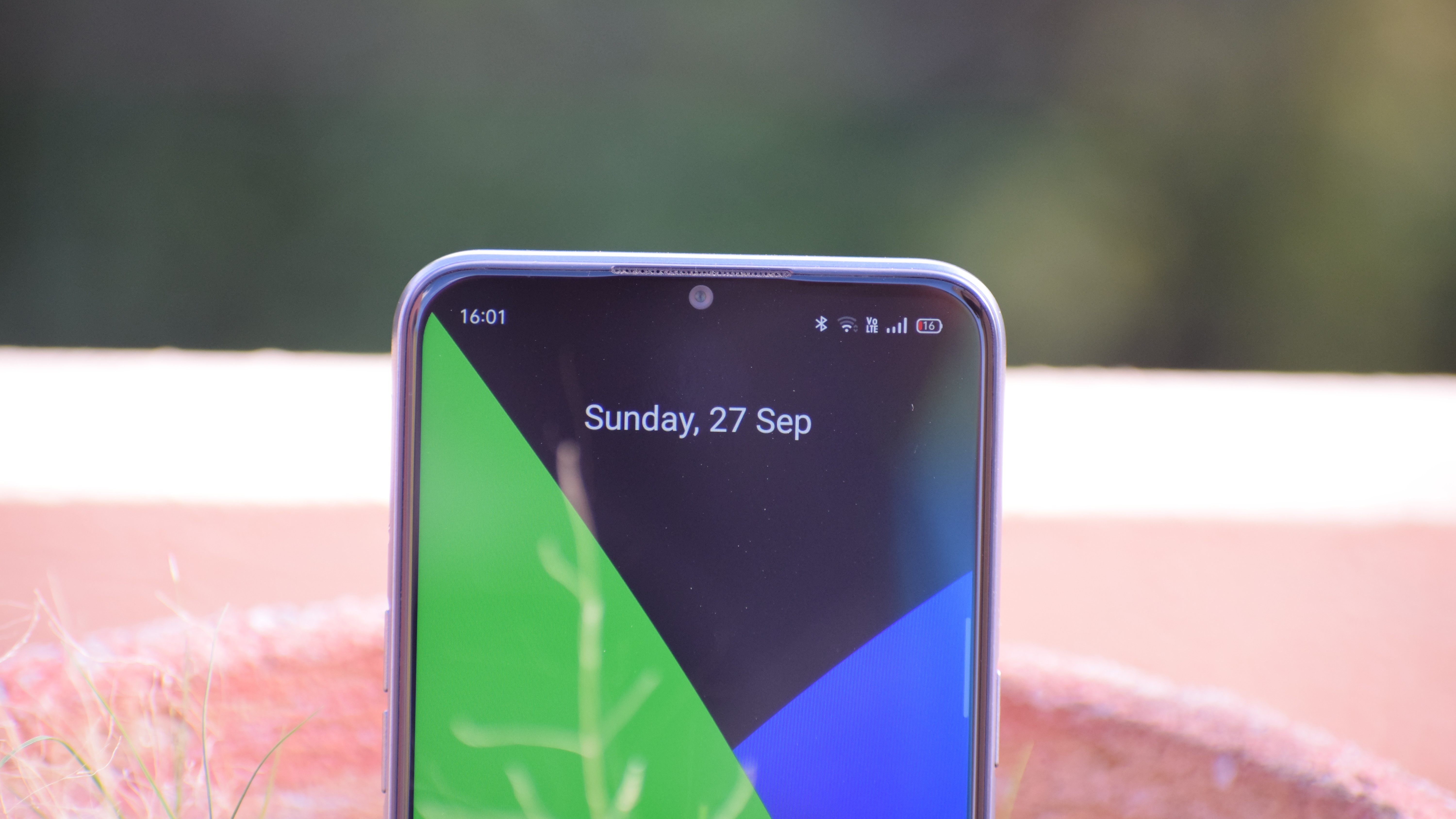
With Narzo 20A, you are looking at a 6.5-inch HD+ screen with a resolution of 1,600 x 720 pixels. It is a mini-drop display which means the selfie camera is placed at the centre right above the screen. The device has an aspect ratio of 20:9 and 89.8% screen to body ratio. It has thin side bezels and a noticeable amount of bezel on the top and chin. On top of the screen, you get Corning Gorilla Glass 3 protection which is great at this price point.
The display is good enough for indoor usages. It reproduces good colour and the viewing angles are also decent here. However, we noticed the colour shift while using it outdoors. The max brightness is just enough to read the text but, not the best we’ve seen. To get colours as per your liking, Realme UI offers colour temperature modes - cooler, default, warmer under the display settings. You can tweak according to your needs.
The display does not support HD video playback on OTT apps as it lacks Widevine L1 support and neither is there HDR playback support, which is not surprising at this price point. YouTube videos top out at 720p.
All in all, the display does get the job done right and will be a good one to watch media on the big screen as well.
Performance
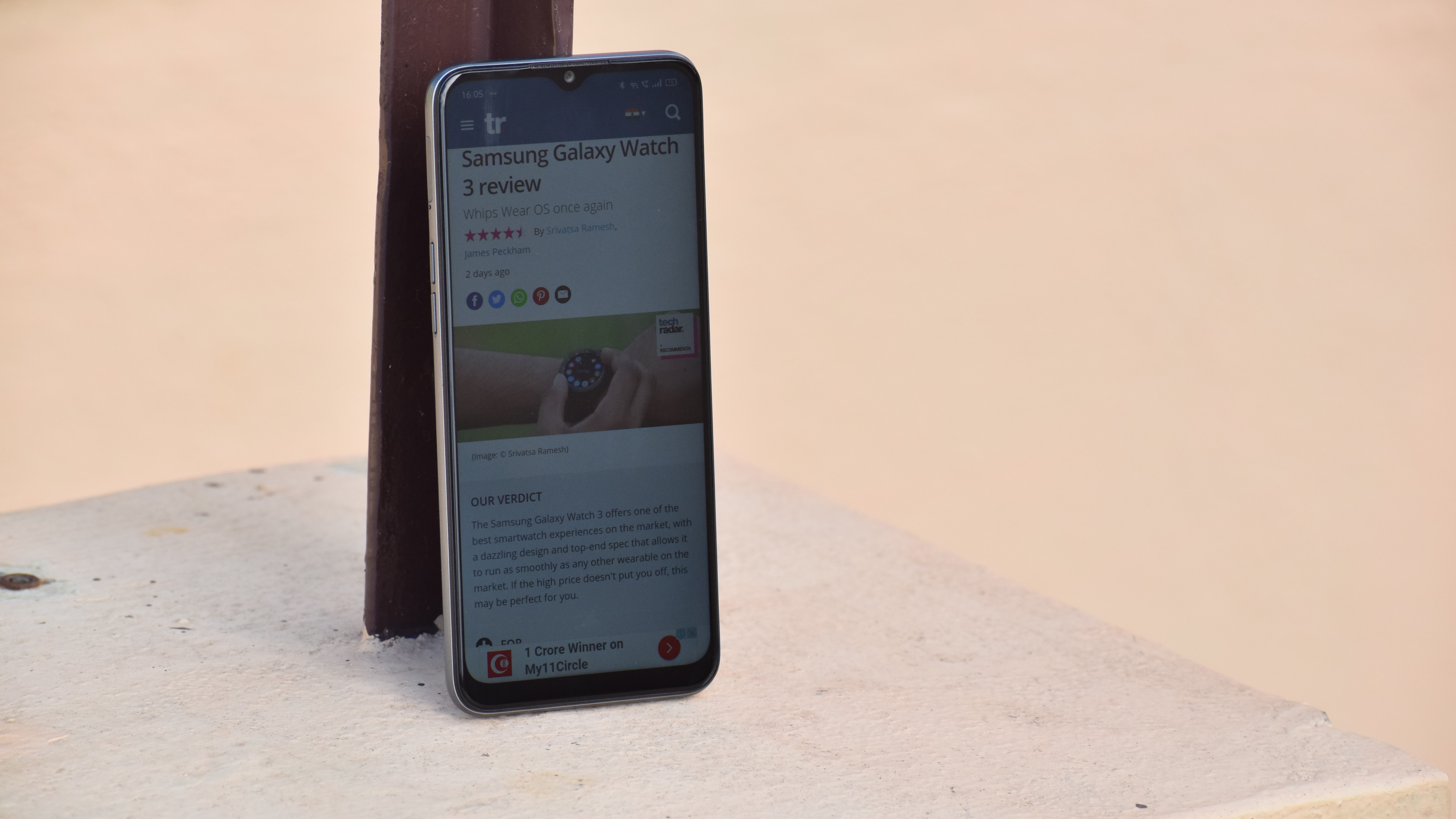
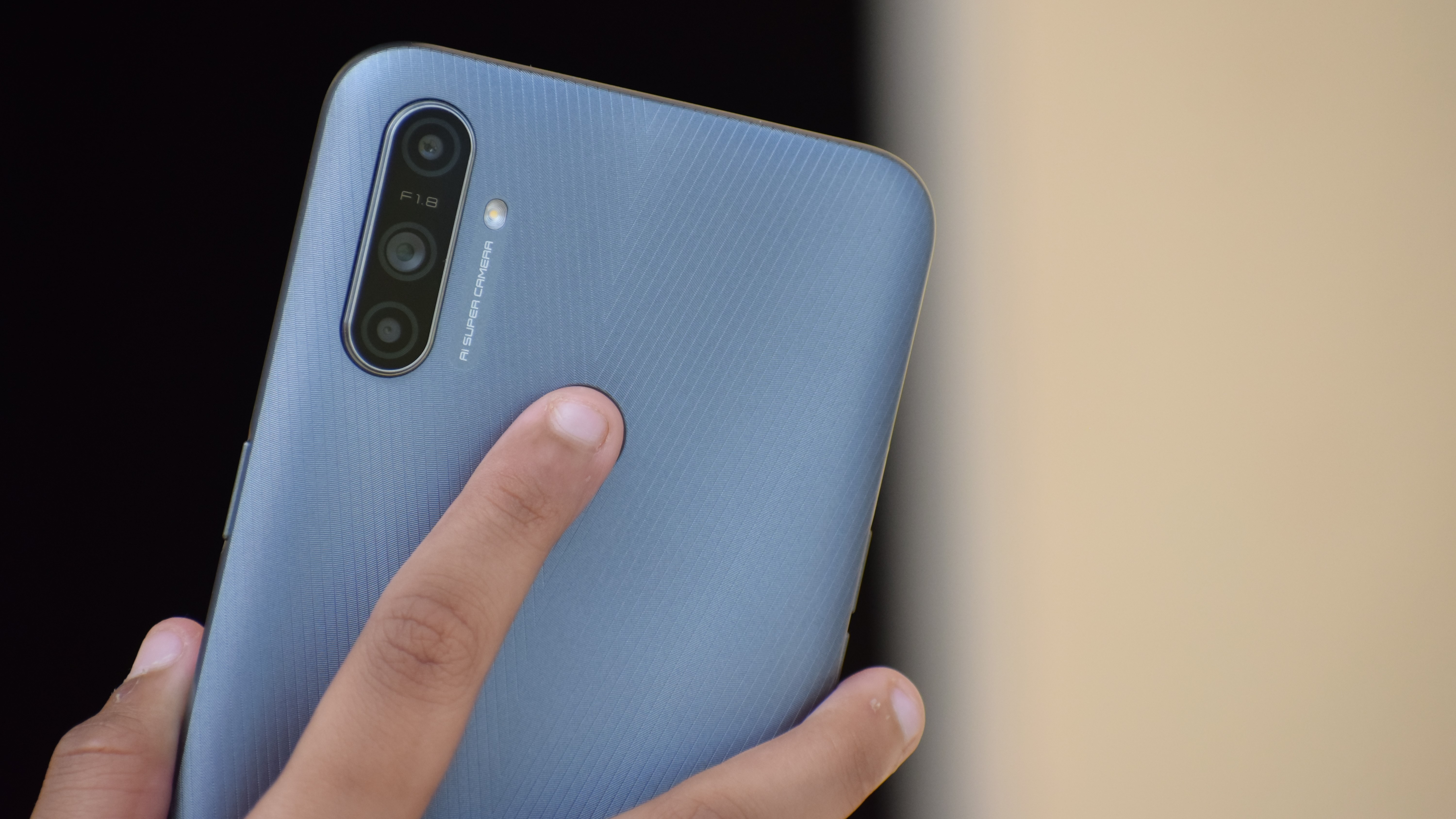
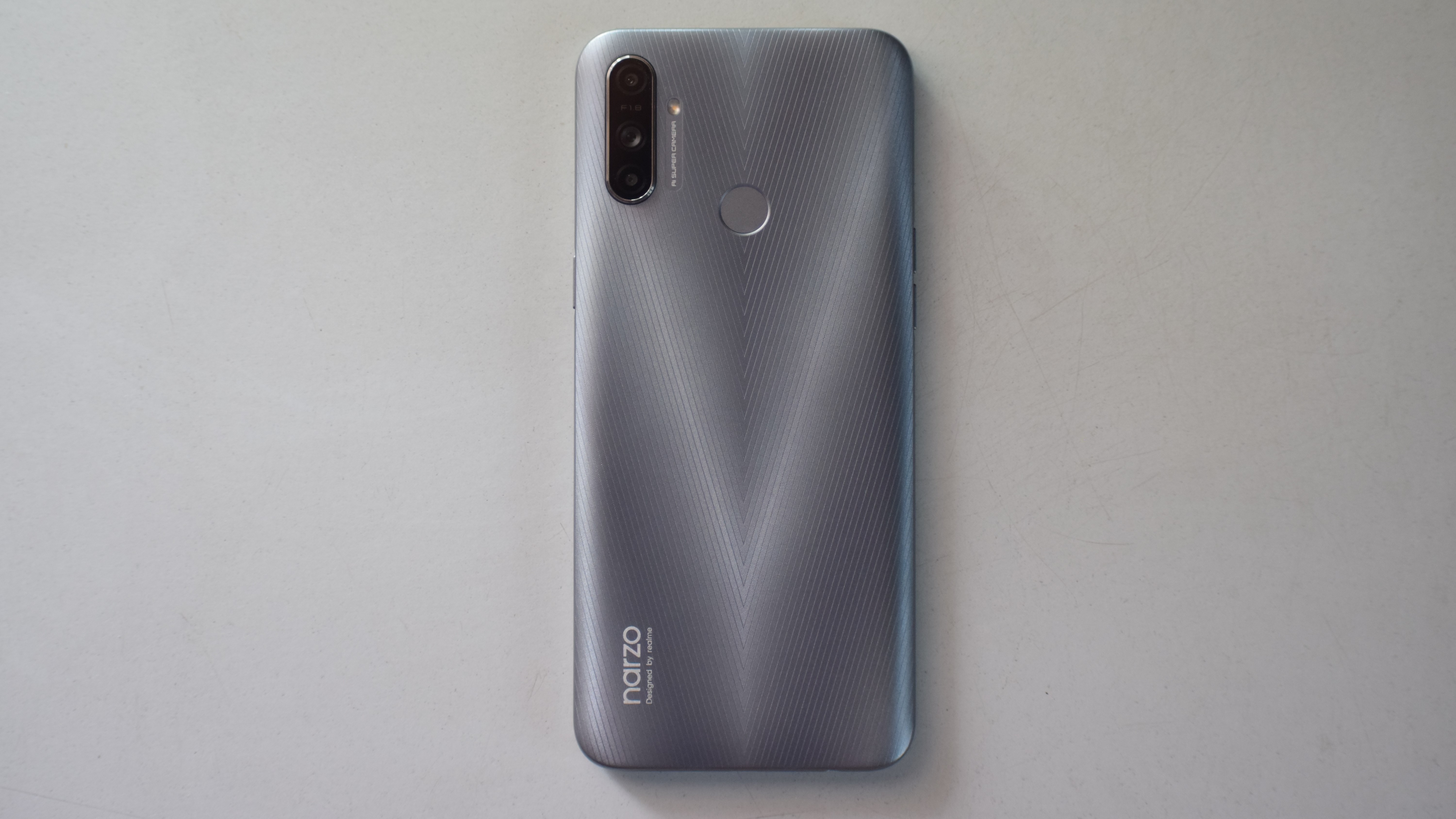
On the inside, the Realme Narzo 20A is powered by a Snapdragon 665 chipset. This is an octa-core SoC built on an 11nm fabrication process. This is paired with up to 4GB of RAM and 64GB of internal storage. You get a dedicated microSD card slot here as well. The Snapdragon 665 is quite a good chipset which came out last year. However, our experience with the device was quite the opposite.
Opening up the apps, scrolling through the interface, heading to settings, or even just going through the list of apps was a painful process. The phone just lags too much even on a simple task. It is extremely slow too. For context, opening the phone app after clicking on it will take at least 5 to 7 seconds. The whole interface seems sluggish every time. We even did a factory reset once and the phone performance remained the same.

We could see the phone struggle in apps like Twitter, Facebook, Instagram, and sometimes the phone also freezes. This is extremely surprising as the Snapdragon 665 is a decent chip that should be capable of handling at least the basic tasks easily. The performance of the phone was pretty disappointing to the extent that we believe this could be one of the worst we’ve seen in some years.
However, there is a silver lining. To our surprise, when we tried out games like Asphalt 9 and CoD Mobile, the phone responded pretty well and the gameplay was quite smooth too. This makes us think that Realme has not optimised the phone well enough which could be why it stutters and freezes often. If this is a software issue, Realme should be able to fix this via an OTA update and until then, we’d not recommend this phone to anyone.
The fingerprint scanner is located on the rear and works well. It opens up the screen quickly and we had no issues with it. For even faster unlocking, there is face unlock. The audio on the devices comes out from a mono speaker which is decent enough for a small room and the call quality with the phone was also hassle-free.
Software

Realme UI is one of the most feature-packed skins out there. The Narzo 20A runs on Realme UI based on Android 10. And, thanks to the Realme’s vast lineup of smartphones, the Nazrzo 20A is slated to receive Realme UI 2.0 based on Android 11 in Q2 2020.
Talking about the Realme UI 1.0 on the phone, this is a pretty polished Android skin with a bunch of additional features that differentiate them from stock Android. It brings the right amount of customization and features. You get the usual system-wide dark mode feature. There is also Focus mode that helps you stay away from the phone for a while and concentrate on more important work. You also get the three-finger screenshot, screen-off gestures, personal information protection with security for banking apps, and then you can also access Google Discover feed from the home screen.
It almost feels like it has too many features for its own good.
The home screen settings give you the option to change icon size, animations, widgets, wallpapers, pull down, speed, theme, and also icon style. Realme has also added an Assistive button which overlays on the screen all the time. This can function as a single home button or you can have it as a menu option.
However, there are all the on-paper features and customization options. But, just like how we had an issue with the performance, the software on the Narzo 20A is also pretty bad. As said earlier, the UI suffered too much during our usage and the two weeks with this phone was pretty much like torture. You can notice the lag, stutter, freeze in all the tasks including the settings and multiple inbuilt apps.
Again, we hope Realme can fix the issue with an OTA update. Else, this phone will be unusable for a person who is a light user also.
Camera

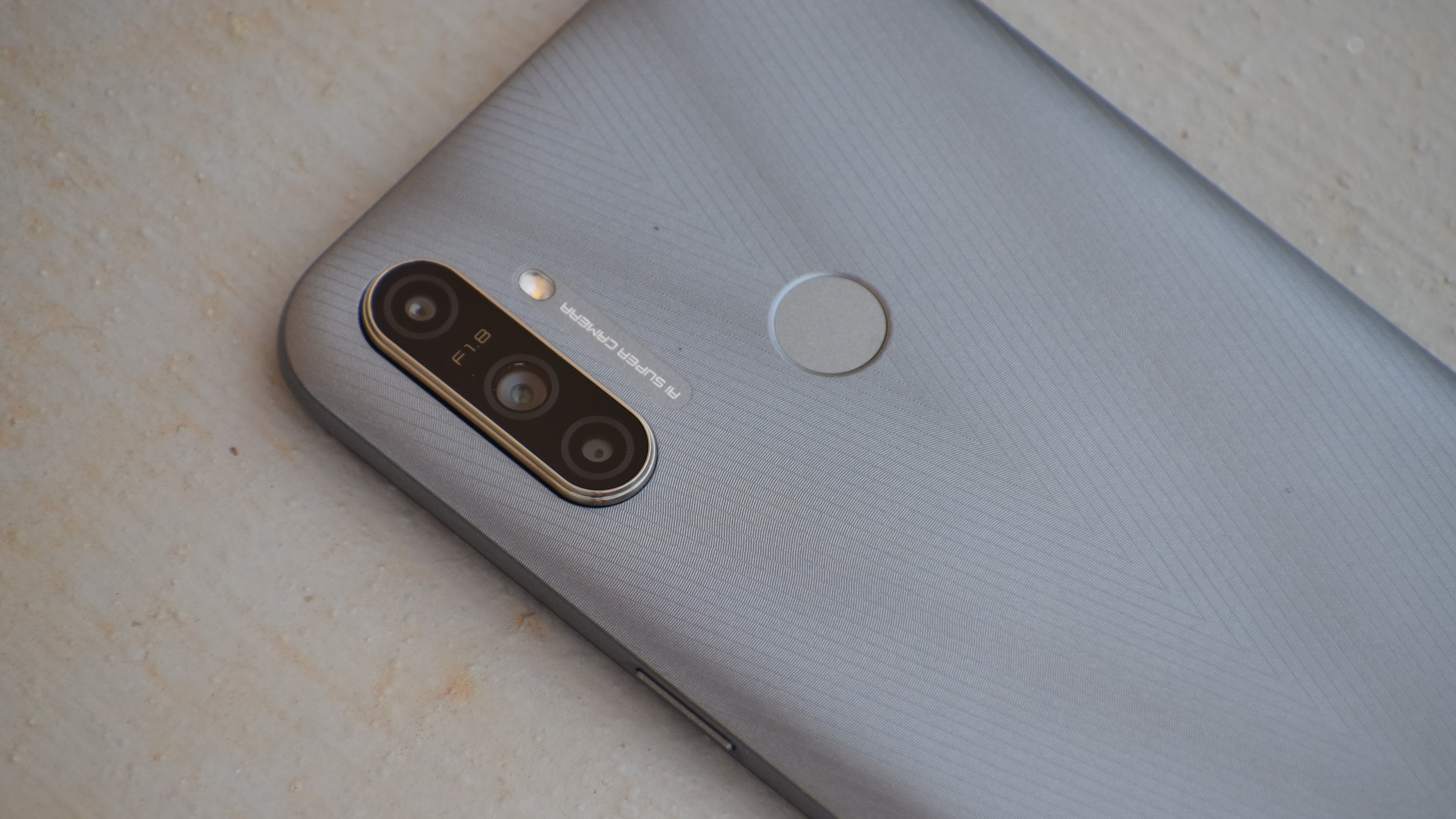
For the optics front, the Nazro 20A brings you triple camera setup. You get a 12MP primary camera with f/1.8 aperture, PDFA, HDR, and Chroma Boost mode. This is followed by a 2MP Black and White portrait lens with f/2.4 and a 2MP retro lens with f/2.4 aperture. To the front, you get an 8MP selfie camera that’s housed in the dew-drop notch. The front camera comes with a bunch of modes like HDR and AI filters. The rear camera can shoot up to 4K 30fps which is a nice addition in this price point.
The 12MP primary camera can take nice pictures in good lighting conditions. The colour accuracy is good and the dynamic range and sharpness are also decent enough and for a phone that costs less than Rs 10,000, this is extremely good. The highlights are also retained well. Although the camera setup doesn’t include a dedicated macro lens, it can shoot macro shots and the results were quite good here as well. However, there are focussing issues every now and then. The portrait shots also come out good and they are usable for most scenarios.
It struggles when it comes to low-light performance but turning on the night mode will get you a considerable amount of detail. But, images turned out to be too noisy. The videos shot on the rear camera with 1080p also supports EIC which is good. And, lastly, the selfies taken out with the 8MP shooter gives you a good amount of details but it messes up with colour tone even with beauty mode turned off. The portrait selfie is not very inconsistent either. In indoor conditions, the selfies come out very soft and the low light selfies are often unusable.
Camera samples

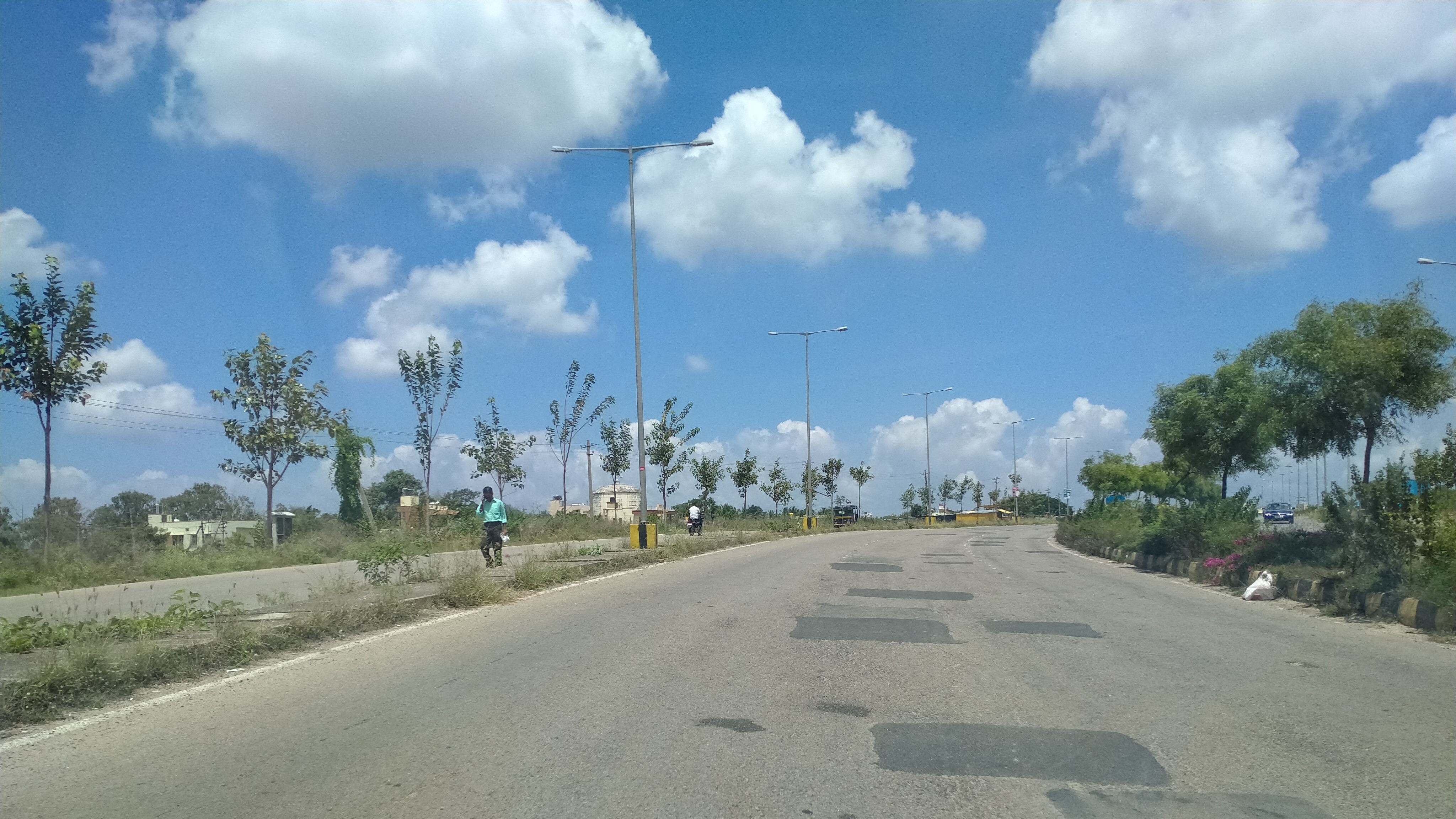





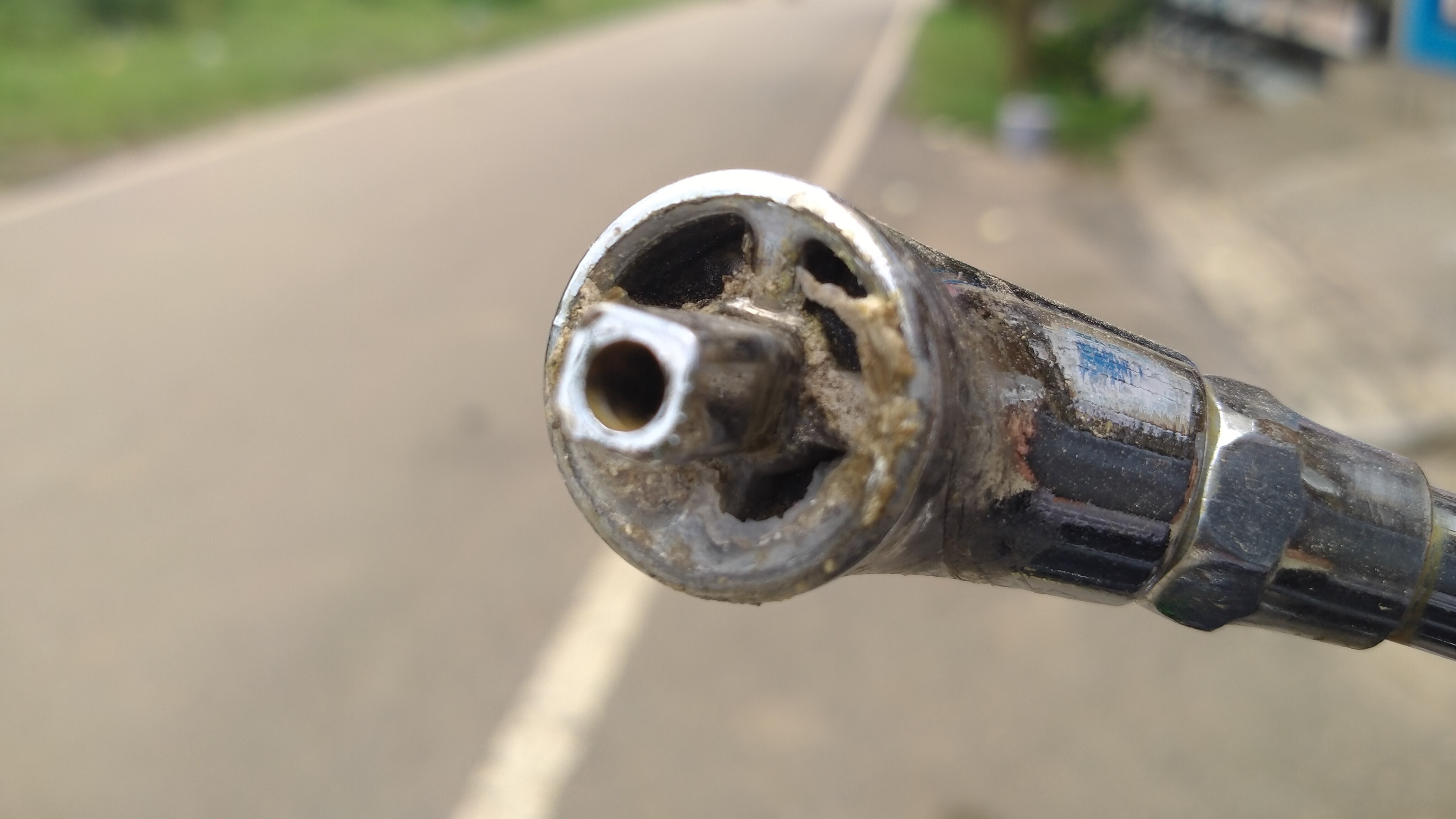

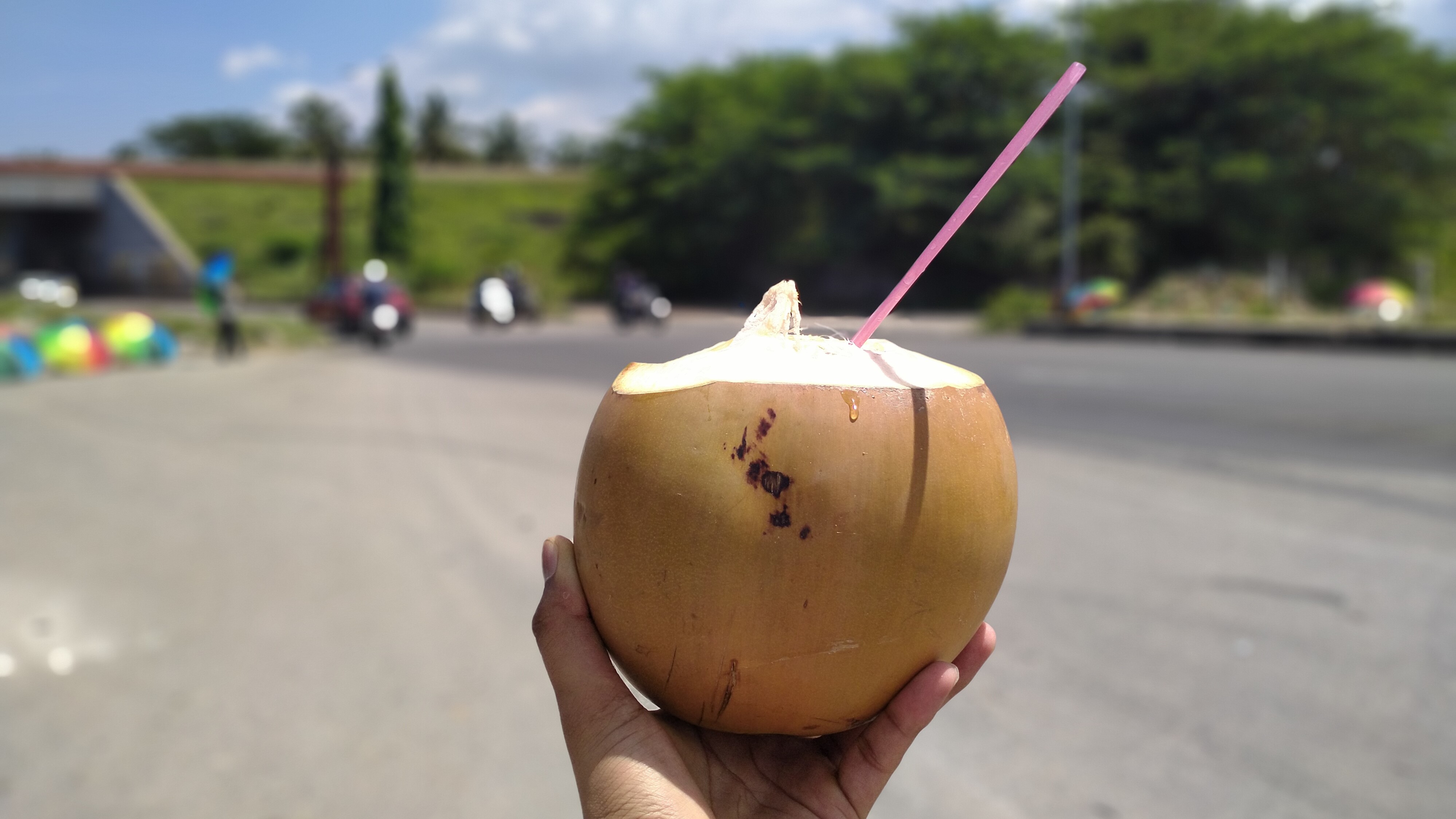
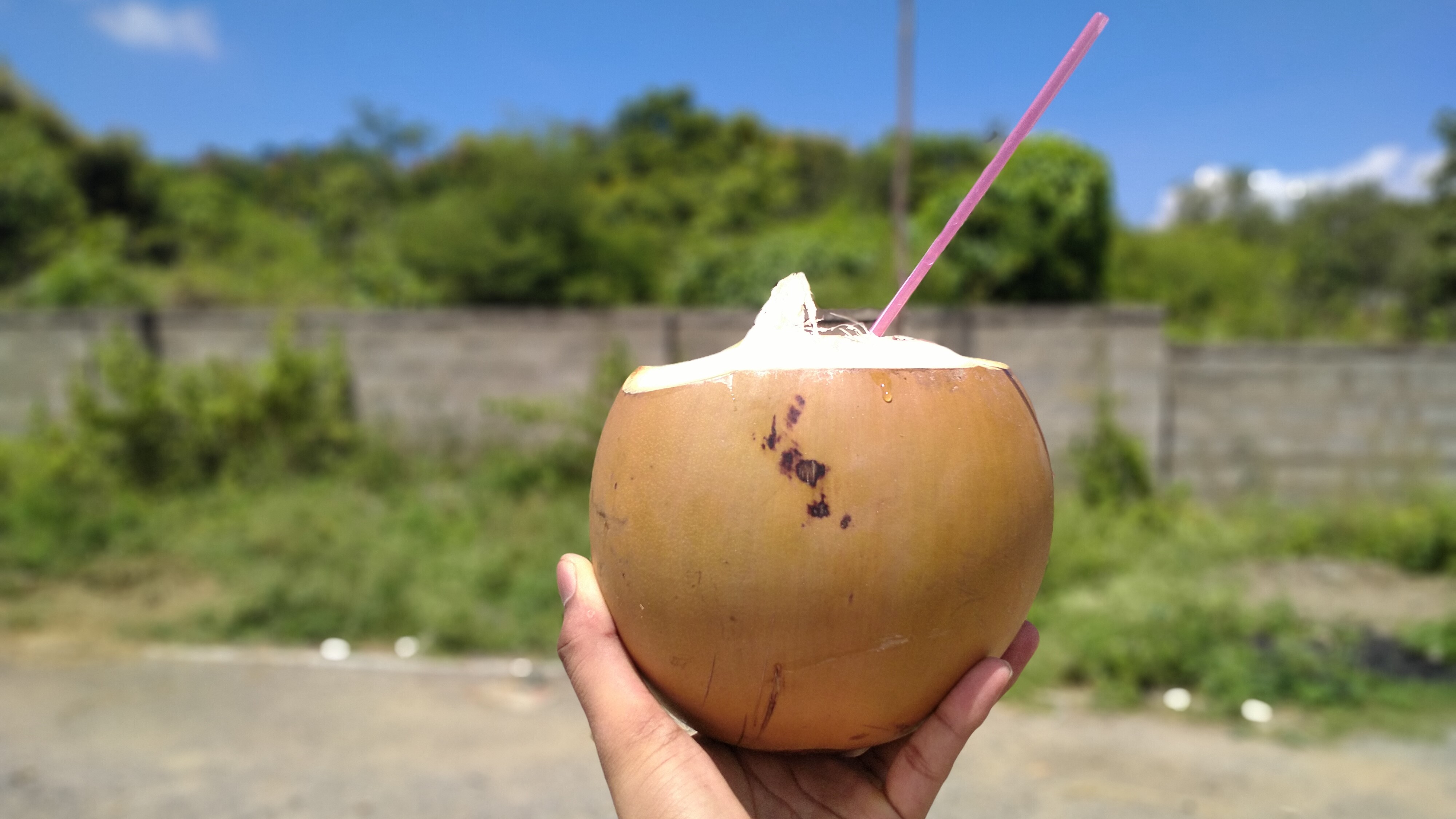
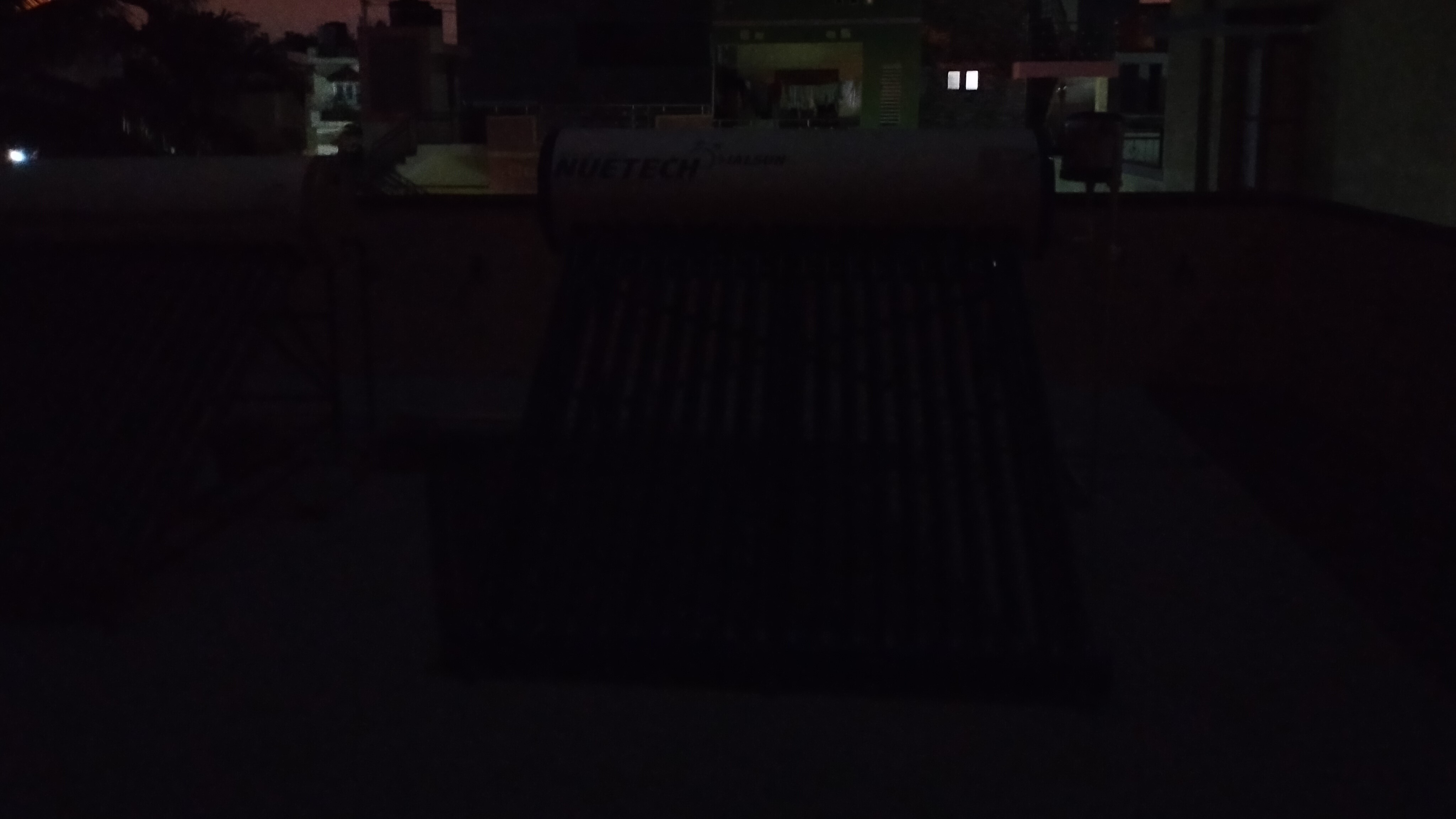
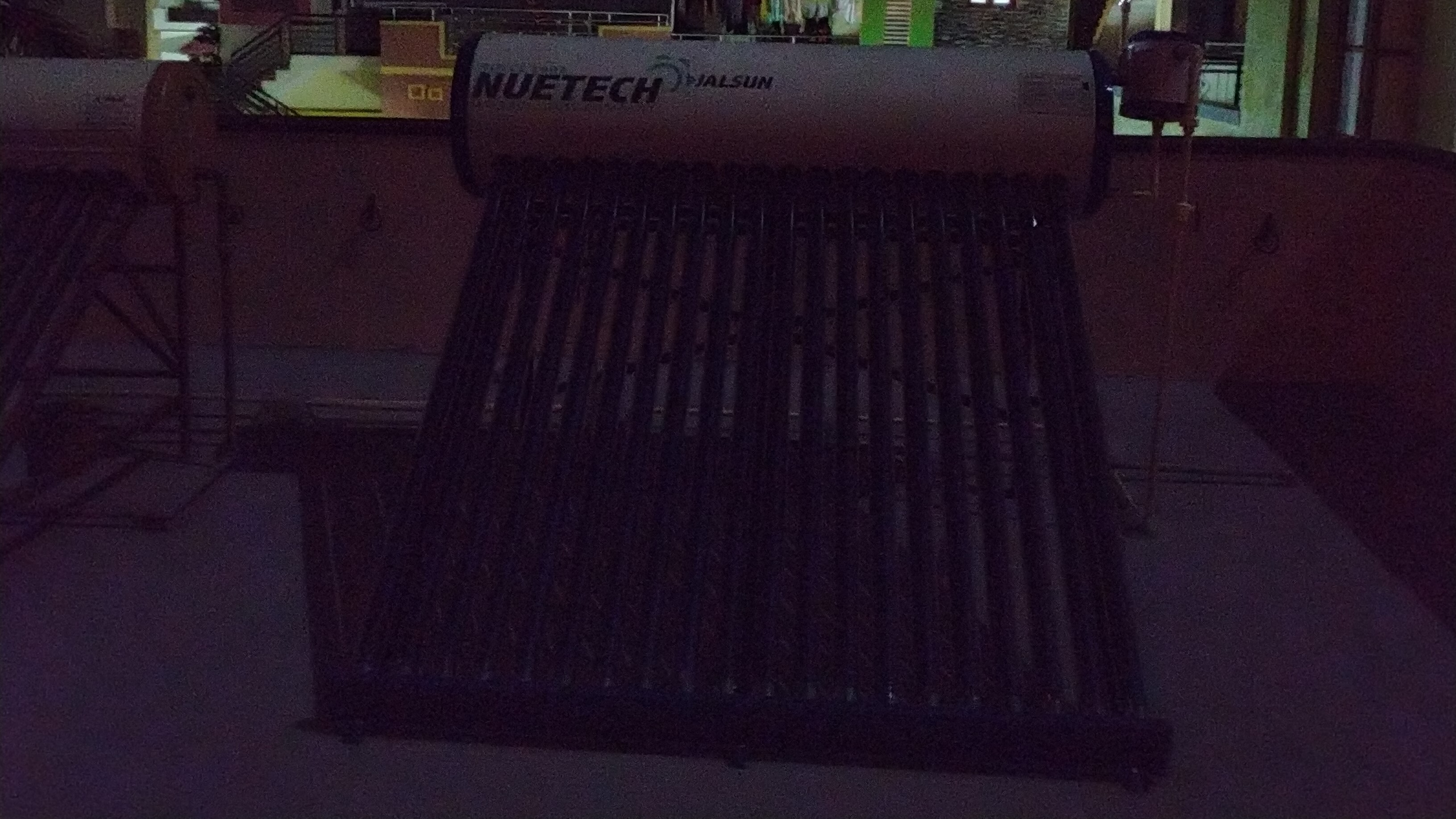
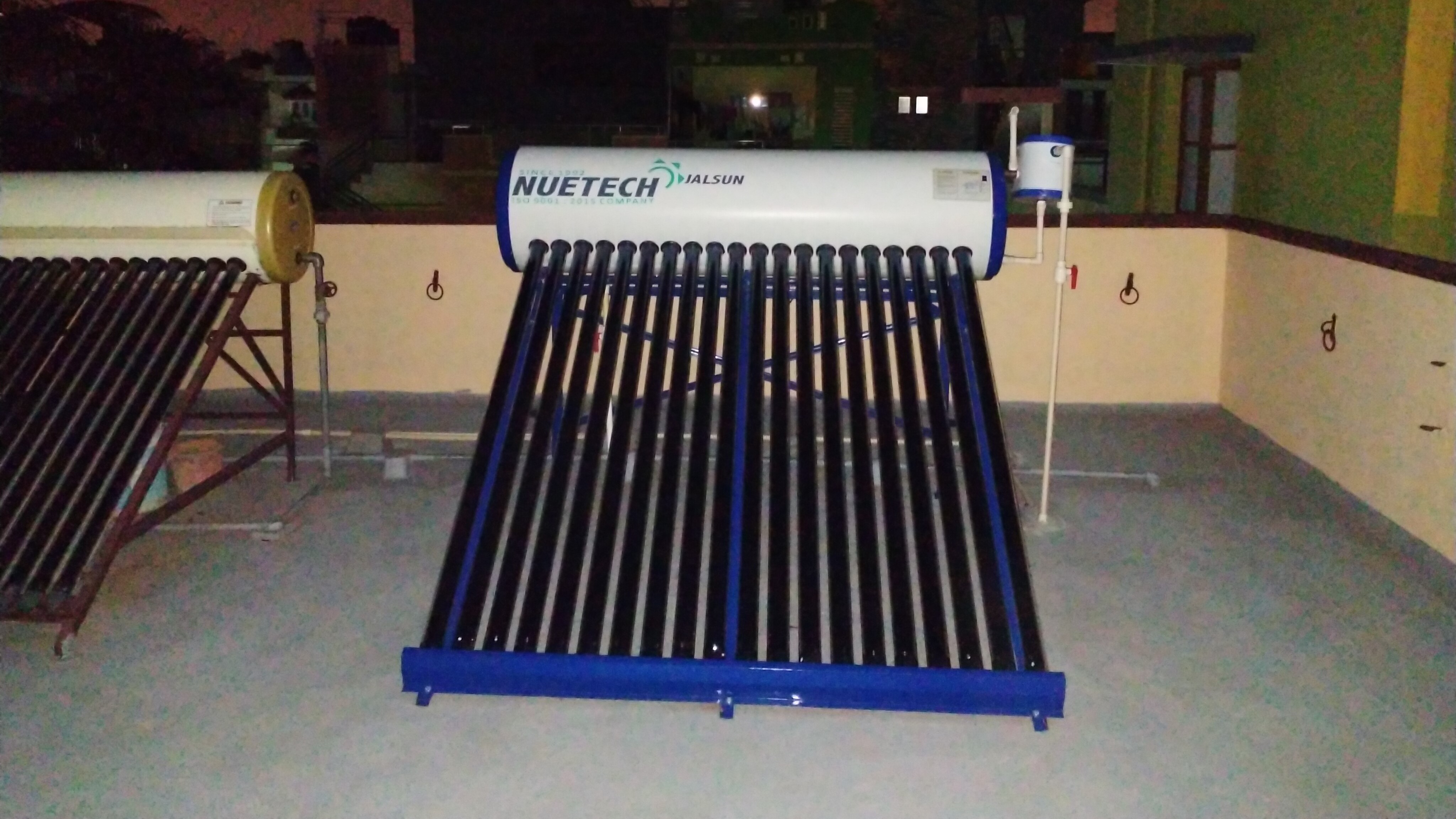
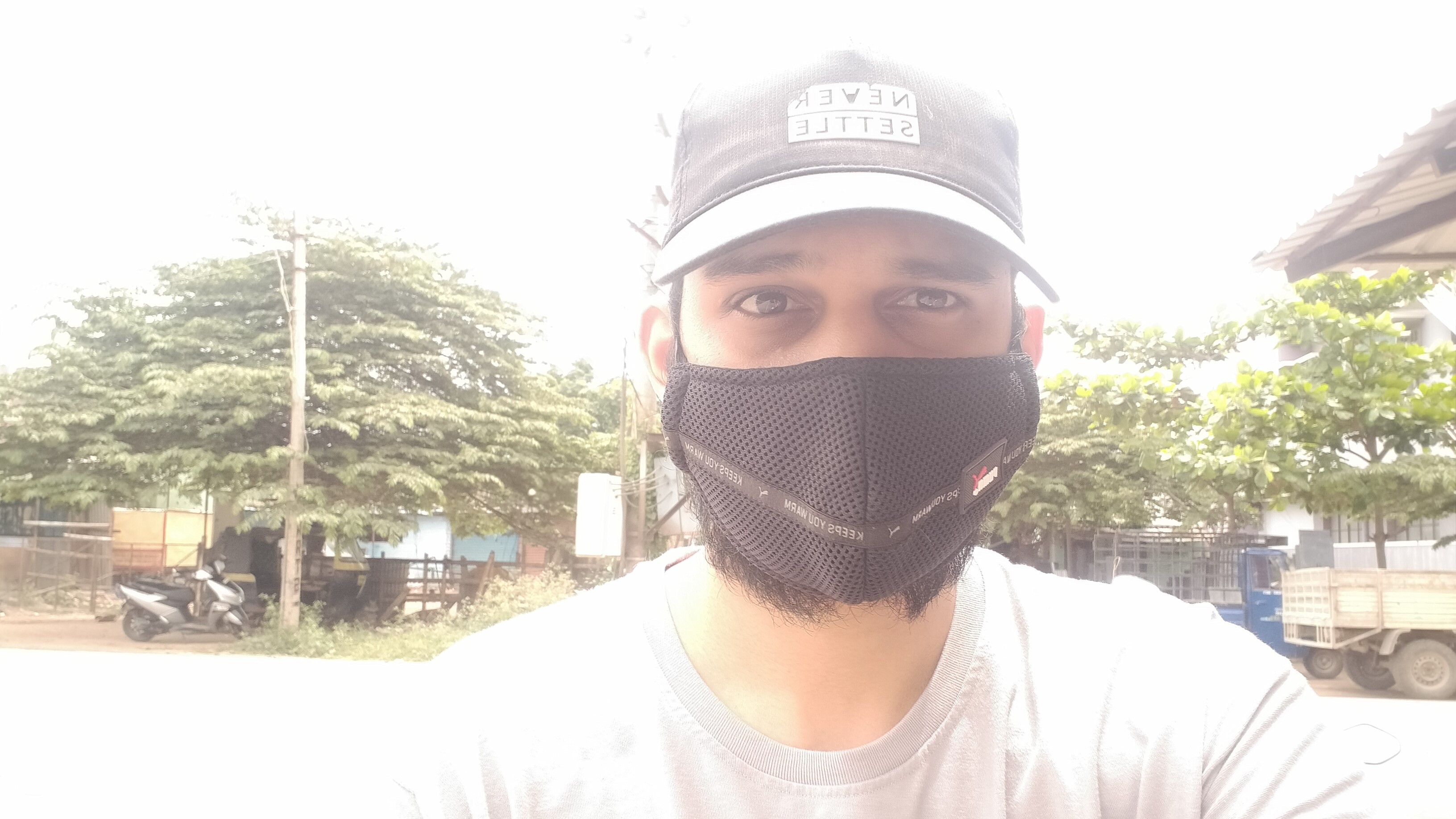

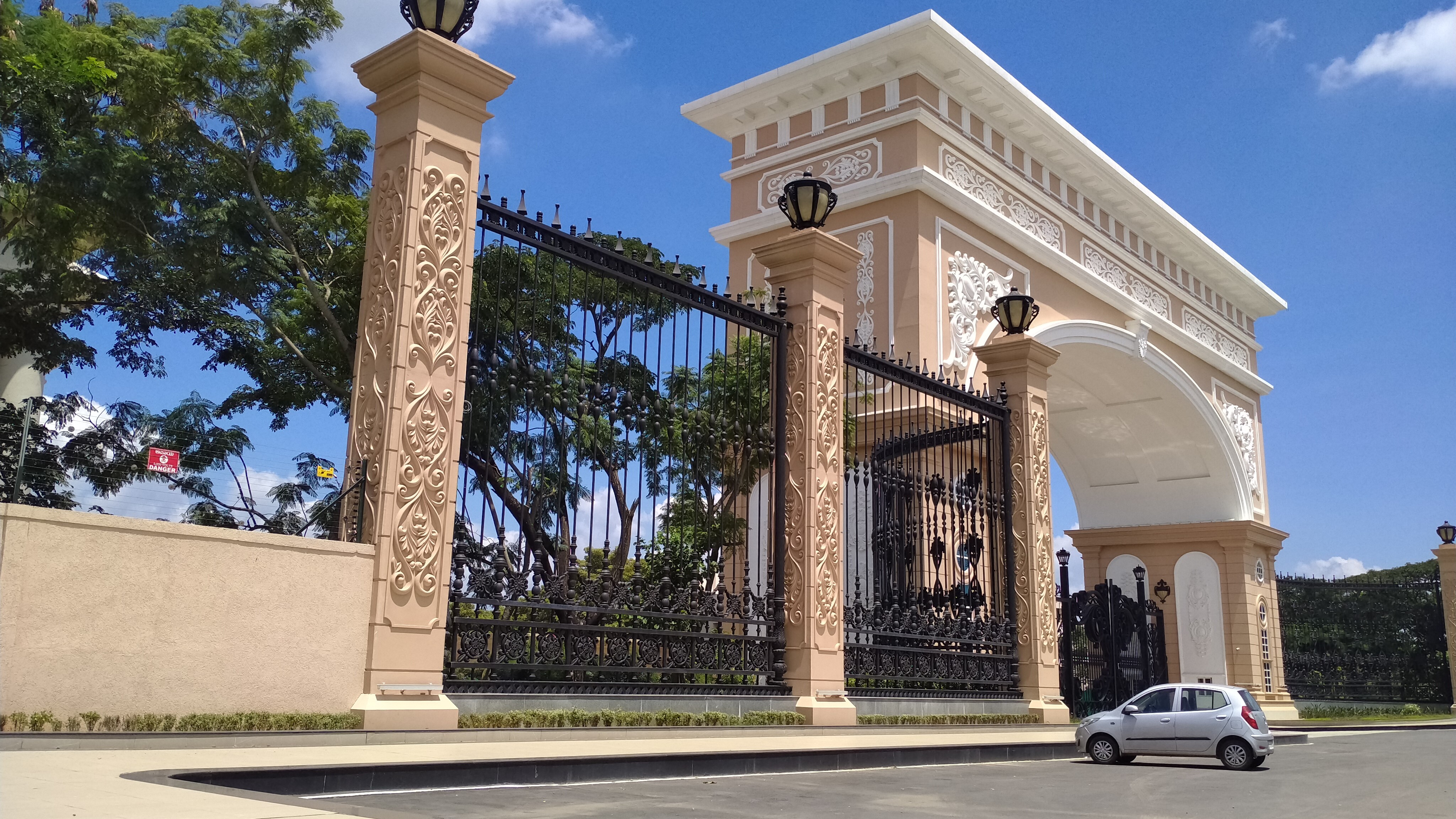


Battery

One of the USPs of the Realme Narzo 20A is the big battery and it nails it. The device is packed with a 5,000mAh battery. On our day to day regular usage which included interaction with apps like Gmail, Slack, calls, WhatsApp and other social media, the device could easily last for almost two days. We got around 9 to 10 hours of screen-on time regularly. All of this with Bluetooth and Wi-Fi turned on 24x7 and brightness set at 80% and up. For those who want even more, they can extend the battery with power-saving mode.

However, you’ll be disappointed when it comes to charging the device. You get a micro USB port for charging and on top of the phone supports only 10W charging which is very slow for a smartphone with a massive battery. At this price point, we’ve seen phones with both Type-C port and fast charging. Realme could have at least added faster charging of not the Type-C port. Charging the device takes up more than three hours and if you keep using the phone while charging, that time will again go up.
Big battery + slow charging can be extremely painful
For those who are ready to keep the device to charge overnight once in two days, this shouldn’t be an issue.
Verdict
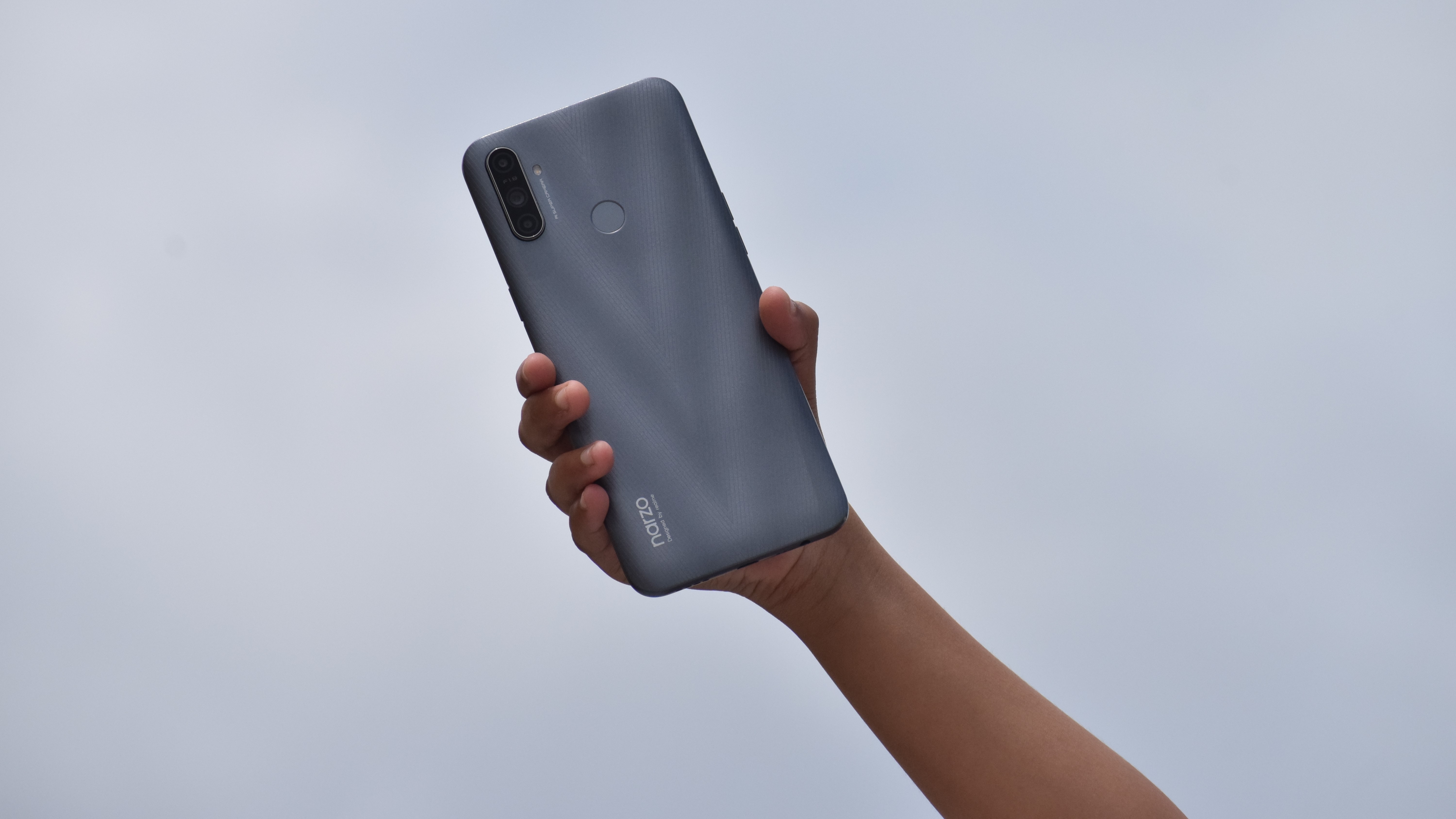
The Realme Narzo 20A offers a good display, new design, and excellent battery life. However, when it comes to the performance, the device lets you down big time. The performance is one of the primary factors while making a buying decision. With Realme Nazro 20A letting us down even with basic apps and day to day usage, we’d not recommend this phone to anyone.
If you are looking for a phone in the same price segment, you can get the new Moto E7 Plus or the Redmi 9 Prime which costs you Rs 500 more but offers you great performance, fast charging and Type-C port.
Srivatsa is a prolific writer who spearheads the core writing team on tech news, buying guides, reviews, and all gadget articles. He is passionate about technology.
